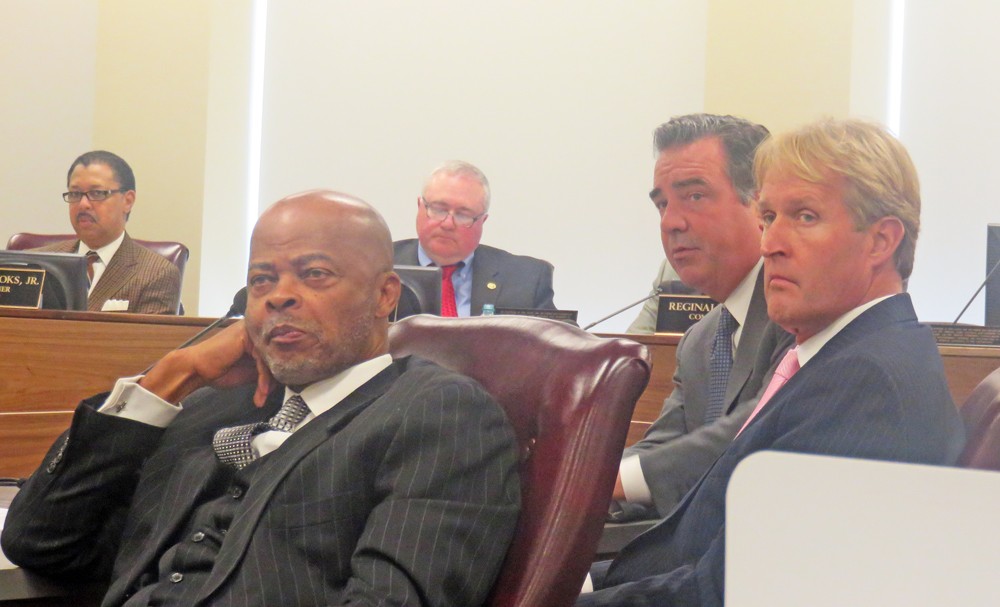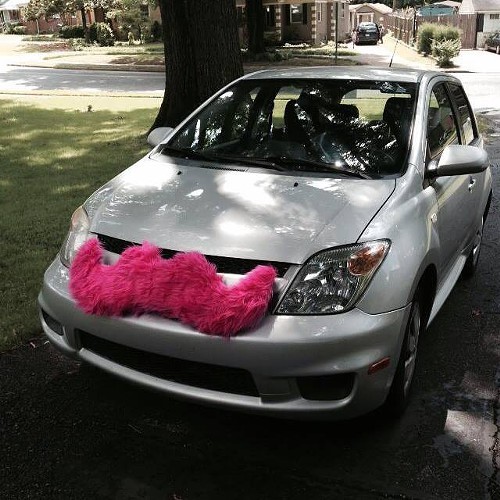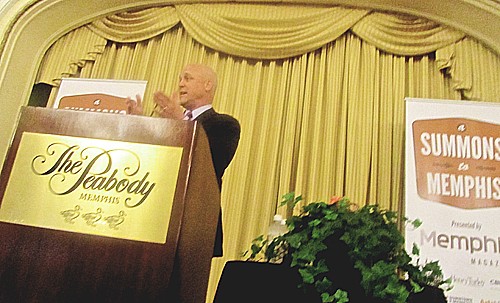 JB
JB
Lipscomb, Marshall, and Kane watch the PowerPoint do its magic.
What a difference a year makes — or a new County Commission. When Robert Lipscomb first floated his vision of a City of Memphis-backed Tourist Development Zone (TDZ) project for the Fairgrounds in 2013, the Shelby County Commission, invited to convey its support of the project to state officials, basically turned up its nose.
Anchored by such doubting Thomases as Commissioners Mike Ritz and Steve Basar, the Commission raised numerous doubts in discussion, focusing on two matters: (1) a concern that the proposed TDZ would compete with the Overton Square and Cooper-Young commercial areas, both included in the Fairgrounds TDZ zone, as well as “cannibalize” future sales tax proceeds from both; and (2) that the future local-option sales tax proceeds due the public schools of Shelby County would also be compromised.
Neither of those issues was fully put to rest in a presentation to the Commission’ economic development committee on Wednesday by Lipscomb, the director of Housing and Community Development for the City of Memphis, who was backed up at the Commission’s witness table by Kevin Kane of the Convention and Visitors’ Bureau and Tom Marshall, architectural overseer for the project.
But it hardly seemed to matter as Lipscomb, at his super-salesman best, seemingly had the members of a Commission largely revamped by the election of 2014 treating Lipscomb’s propositions like candy in the palm. All except for Commission holdover Basar, chair of the Commission’s economic development committee, who, at the close of an almost rhapsodic session, announced that he still had reservations about the project, which he would subsequently document and communicate to his colleagues.
There was no formal vote, inasmuch as Lipscomb had said on the front end that he was not seeking a vote of endorsement just yet by the Commission, which is not a formal party to the TDZ proposal. Should it come to pass, the county would be affected economically by it, for better or for worse, however; so Commission approval, if and when it came, would have an effect on the state Building Commission, which has had the proposal for a year now and still has to rule on the proposal. Ditto would a rejection count for something.
County CAO Harvey Kennedy said for the record that “we do not object to this proposal,” though he was not ready to confer the county administration’s blessings, either, not so long as there was uncertainty over the fate of the schools’ portion of incremental sales tax proceeds during what was destined to be a 30-year fiscal run for the project.
Basar notwithstanding, most of the other Commission members seemed almost giddy about the TDZ’s proffered blessings — which, as Lipscomb described them, via words and PowerPoint, would include a revamped Liberty Bowl, a new multi-purpose facility in place of the current moribund Coliseum, a new
Fairgrounds stadium, a new gym for adjoining Fairview Middle School, and oodles of other benefits, including, on the north end of the current Fairgrounds, gleaming new retail enterprises that would be carefully recruited so as not to conflict with commercial activities elsewhere in the TDZ — namely, Cooper-Young and Overton Square.
There was a feasibility study demonstrating just how all this would jell, said Lipscomb, who promised to make it available to the Commissioners at some point later on.
Did the project seem over-ambitious, especially since it would tap an unusually large geographic area (the same area which, in theory, would reap measurably more tax revenue as a direct of the TDZ)? Lipscomb put up a slide showing that all kinds of other cities — including Nashville, ever a yardstick — had managed TDZs over even larger areas.
Meanwhile, the City’s veteran Svengali of urban planning laid it on thick. As he checked off the features of the plan on PowerPoint, he described each future-tense marvel as “world class,” and each was to be merely a part of a whole, “a world class city.” Not only would there rise “a great new city right before our very eyes,” the successes of the TDZ would simultaneously, by yanking on the bootstraps of the entire community —black and white, Democrat and Republican, urban and county— be “fighting crime and reducing taxes.”
Give it to Lipscomb. He didn’t become the guiding force of city planning in two straight mayoralties merely by dint of his intelligence or his behind-the-scenes skills or even his planning acumen. He’s the Music Man, the Pied Piper, the ice cream man; he stirs the imagination and makes his audience want what he’s got to sell.
“Congratulations,” said Van Turner when Lipscomb had finished his first run-through. “It makes all the sense in the world…a no-brainer….” In fact, a “world-class deal,” said Terry Roland. “Totally in support,” said Reginald Milton. “Fully support,” chimed in George Chism. And Willie Brooks. And Justin Ford. On and on it went like that. The Commission’s newbies, especially, seemed thrilled, even covetous.
When it came his turn to speak, Basar, who as chairman of the general government committee had presided over the meeting with admirable fairness, was the soul of politeness, too, in acknowledging that he was still a skeptic. Walter Bailey, the Commission’s senior eminence, dutifully put in a request to see the aforementioned feasibility study. “Happy to,” said Lipscomb. And, as Kennedy reminded everybody, there was that matter of future school funding that wouldn’t go away.
The state legislation that governs TDZ financing is so far unrelenting; The bond issue that would pay for the public share of the project — a projected $176 million, before the inevitable overrun —would be repaid by drawing upon all the incremental gains in local sales-tax revenues (assuming there are same). As things now stand, there is no provision for setting aside that portion of it that would otherwise go into the school coffers.
By Basar’s estimate, that fact, unless amended, could deprive the schools of anywhere from $1 to $2 million annually over the 30-year period of the project.
Lipscomb was concessive. Even though the law did not mandate it, maybe the plan could be reconfigured to put some payback in for the schools. He indicated, indeed, that such was the idea. Maybe the law could be changed. Maybe, Kennedy suggested, there could be a “side agreement” with the City to make up the difference.
Right. Memories of the several cooperative ventures on which city government had been slow-pay or no-pay with its county-government partner were still fresh. Basar could not resist rubbing it in. He might be able to support the deal, he said, if the City should make a “pre-payment” of the $57 million it has owed the schools for years now in a court-ordered judgment.
The Commission was cautious enough to postpone putting itself on record with a vote. Still, the session on Wednesday had generated a significant amount of optimism — certainly on the part of Robert Lipscomb.
Meeting with reporters afterward, Lipscomb said he hoped to present the state Building Commission with a “26-and-oh” endorsement from local government — 13-0 from the City Council and 13-0 from the County Commission.
“We’ve got a little work to do, but you saw the support,” he said. “Let’s answer questions, and not be contentious. The way other cities get ahead of us in Tennessee is that they’re not contentious….I think it’s real important that we all say the same thing, and we all give support….We’ve got to govern together and not be always this-versus-that and be divided by income disparity, race, gender…everything. We’ve got to figure out a way to work together.”
As Lipscomb himself might say: To be continued.

